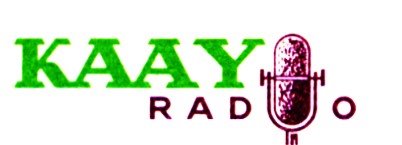In the past I have written and posted part of RIchard Robertson's disertation on the use of 50,000 watt radio stations to broadcast to Cuba during the bay of pigs incident. I have even had response from Cuba about that subject. At KAAY we often received response from Cuba. Even though we were in English, there was a clamor for rock and roll. I would again like to hear from anyone in Cuba if they listened or listen now to KAAY.
Meanwhile, here is the conclusion of one of Richard's papers:
The use of private commercial radio stations during the Cuban Missile Crisis of 1962 was unprecedented in the history of the United States. President Kennedy relied heavily on his propaganda agency, the USIA, and its broadcast propaganda arm, the Voice of America. The effort to prepare and secure the radio stations for broadcasting to the island of Cuba went quite smoothly and was accomplished in a short period of time.
The ten radio stations did get some publicity from their effort in cooperating with the government, but received no money from the government for the air time. Newspapers carried both locally written and stories from the Associated Press in New York, Little Rock, and Kansas City. However, in interviews with individuals during the research process, few people remembered this aspect of the crisis. This included officials at the FCC, VOA, USIA, and others. Most of the publicity was not that great in comparison to other angles used in news coverages. It is possible that the use of the commercial broadcast radio stations may have been "lost" in the shuffle, especially since the major news interest was what Soviet Russia was going to do in regard to the missiles in Cuba.
There was no way at that time to determine what kind of penetration or impact the broadcasts had during the crisis. Signal strength tests revealed that the stations covered the island of Cuba, but no type of audience poll or survey could be conducted. While KAAY in Little Rock did receive letters, which showed that some people were listening, how many is not known. The impact of the VOA transmissions on the Cuban people is an unknown as well. If the Cubans heard the broadcasts, did they (the broadcasts) effectively sway their opinion? It was suggested that Castro practiced "jamming" the signals, so that the effectiveness would be reduced, but there is no data to support this.
At no point in the research was the question of CIA involvement answered. Radio station officials, as well as FCC and USIA officials denied it. A cooperating radio station employee stated that an FCC field inspector told him that the FBI watched the transmitter locations at the ten radio stations around the country for possible sabotage, but there was nothing to substantiate this statement. An official at the USIA said that the CIA had made "such a mess" of the Bay of Pigs a year earlier, that he felt the CIA was told to "lay low" and not participate.
According to the USIA, the Cuban Missile Crisis was indeed the first time in U.S. history that private radio stations were utilized to carry propaganda programs for political ends directly to foreign countries. In this author's opinion it has not happened again. No evidence could be found to support any further usage by the USIA. It would now be difficult to achieve in today's fragmented media environment, taking into account the media and political environments of the present day. CNN and the "global village" concept, along with computer interlinks, may make this type of activity more difficult (Wilson; Robinson, 1997).
The event does raise ethical questions as to whether or not the government should have handled the broadcasts in this manner. In 1962 radio stations were licensed for a period of three years, and while the station owners willingly gave up blocks of air time for this government effort, they surely had the question of applying for renewal of their license on their minds. This may have played a significant part in their decision to offer their stations for use by the government.
Further research might investigate whether any USIA programs or materials were used after the Cuban missile crisis; does the USIA have any links to radiio and television stations in the United States on any level?; what, if any is the current relationship between the USIA and U.S. broadcast stations?; are there new methods of disseminating propaganda in the current technological environments, and are current propaganda transmissions to foreign countries effective?
Monday, November 10, 2008
Subscribe to:
Post Comments (Atom)


No comments:
Post a Comment